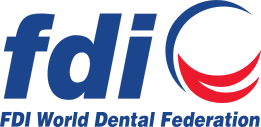Dento-maxillofacial imaging in contemporary dentistry
Location
Speaker
Mamadou Lamine Ndiaye
Je suis le Professeur Mamadou Lamine Ndiaye enseignant-chercheur, spécialisé en imagerie dento-maxillo-faciale, chef de service de radiologie dento-maxillo-faciale de l’Institut d’Odontologie et de Stomatologie de la Faculté de Médecine Pharmacie et Odontologie de l’Université Cheikh Anta Diop de Dakar, au Senegal. Premier et le seul spécialiste en imagerie dento-maxillo-faciale en Afrique francophone subsaharienne.
Plusieurs publications dans des revues scientifiques internationales à comité de lecture. Nos travaux s’articulent sur des sujets tels que la radioanatomie dentaire et crânio-faciale, la radioprotection, l’intelligence artificielle, le flux numérique dentaire, le Cone Beam CT. Nous sommes régulièrement invités à présenter ses travaux et son expérience lors de congrès, séminaires et conférences, aussi bien au Sénégal que sur la scène africaine et internationale.
Organizer
Abstract :
Dental and maxillofacial imaging is undergoing a radical transformation, moving from a traditional two-dimensional diagnostic approach to an integrated three-dimensional view. This technological evolution is completely redefining our daily practice, enabling a more precise, predictable and minimally invasive approach to dental treatment. Panoramic and retroalveolar radiography, although useful for initial screening, has significant limitations: superimposition of structures, geometric distortion and lack of volumetric information. The advent of cone beam computed tomography (CBCT) has revolutionised our diagnostic approach by providing a three-dimensional view of anatomical structures with reduced radiation exposure. In implantology, through accurate anatomical assessment and implant placement planning using surgical guides; in endodontics, through the identification of additional canals, diagnosis of root cracks and fractures, assessment of periapical lesions and planning of endodontic surgery. The precise location of impacted teeth and the integration of intraoral scanners pave the way for completely digital treatment planning and the manufacture of customised elements using 3D.
Learning objectives :
- Reviewing the history of imaging in dental practice
- Understanding the impact of technological advances in imaging on diagnosis, treatment planning and clinical outcomes.
- Moving from a static 2D view to a dynamic, three-dimensional understanding of anatomical structures.
